
BMW X5 Estate (2007-2013) engines, drive and performance

The second generation BMW X5 started out with two petrol V8s of 4.8-litres offering 272- and 335bhp. They were replaced in early 2010 with a twin-turbo 4.4-litre V8 that is more economical and more powerful.
For the 50i model, it has 408bhp on tap to give 0-62mph in 5.5 seconds while remaining eerily smooth and with only a distant V8 burble when it’s worked hard. For real BMW X5 performance there’s the X5 M that bristles with 555bhp for 0-62mph in a near-M5 rapid 4.7 seconds. The V8s uses a six-speed automatic gearbox that is silky and well suited to the cars’ needs.
Diesel engines
It’s little surprise that the diesel engines are favoured by X5 buyers – they accounted for 94% of all original models thanks to their frugal efficiency and punchy nature. The second-generation model started with BMW’s 3.0-litre turbodiesel, producing 235bhp along with immense pulling power.
This was then improved to 245bhp in early 2010, when BMW also introduced an eight-speed automatic gearbox as standard on all diesel models. It’s smooth and refined but with plenty of mid-range shove and reaches 62mph from rest in just 7.6 seconds – which is especially impressive considering it weighs more than two tonnes.
The other diesels start with a twin-turbocharged version of the same engine that produces 306bhp in the 40d, while the 50d has a triple turbocharged version with 381bhp for 0-62mph in just 5.4 seconds. All are immensely smooth and rapid and they sound good too when stretched, though they remain near silent when cruising.
Parkers recommends
While the more potent engines are tempting, it’s the entry point 3.0-litre diesel that makes most sense and is the most popular choice with buyers.
Although the original X5 had excellent road manners, the second-generation model has made significant steps forward. A longer wheelbase and wider stance give it a lower centre of gravity while the stiff body means body roll is kept well in check. The meaty brakes instil even more confidence and the X5 feels stable and composed through bends with fantastic traction.
But despite it’s sheer size and weight it actually feels fairly nimble, helped in a large way by the well-weighted and involving steering. The X5 can also be specified with two advanced driver-focussed systems called Adaptive Drive and Active Steering . The first uses hydraulics to counteract the effects of cornering, preventing the body from leaning too heavily – it also continuously adjust the suspension settings for optimum comfort.
Cars fitted with it feel exceptionally well controlled, no matter how difficult the corners. Active Steering reduces the amount of lock needed to turn the car at low speeds, making parking or low-speed corners easier, while increasing resistance at higher speeds for a more composed ride. Off road, the X5 doesn’t have the hardware to compete with proper 4x4s, but does come with hill descent control (whose speed can now be reduced on the move using the cruise control), and a hill-start assistant which holds the brakes for up to three seconds after the driver’s foot comes off the brake pedal.


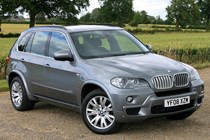
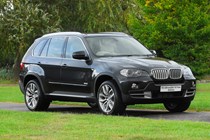
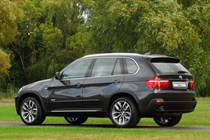
.jpg)
.jpg)
.jpg)
.jpg)
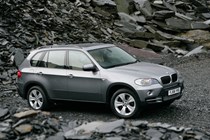
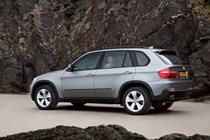
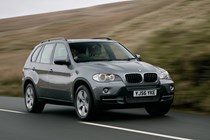
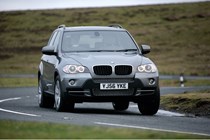
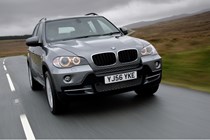
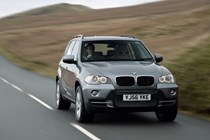
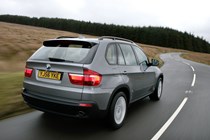
.jpg)
.jpg)
.jpg)
.jpg)
.jpg)
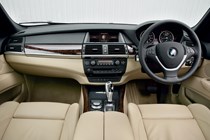
.jpg)
.jpg)
.jpg)
.jpg)
.jpg)
.jpg)
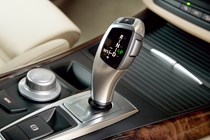
.jpg)
.jpg)
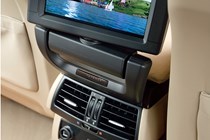
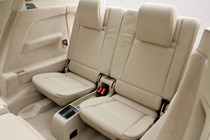
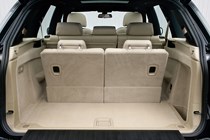
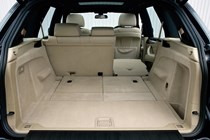
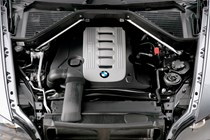



.jpg?quality=50)
.jpg?quality=50)
.jpg?quality=50)
.jpg?quality=50)







.jpg?quality=50)
.jpg?quality=50)
.jpg?quality=50)
.jpg?quality=50)
.jpg?quality=50)

.jpg?quality=50)
.jpg?quality=50)
.jpg?quality=50)
.jpg?quality=50)
.jpg?quality=50)
.jpg?quality=50)

.jpg?quality=50)
.jpg?quality=50)




